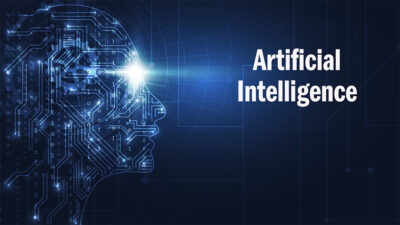
From healthcare to finance, predictive AI shapes decisions daily. It helps retailers forecast trends, banks detect fraud, and doctors assess disease risk. Fast and efficient, it’s widely used to save time and boost profits, but like a map based on past travels, predictive AI works best when the future mirrors the past. It spots patterns but often can’t explain them.
Predictive AI struggles with new situations and can inherit bias from its training data. These gaps affect trust and performance. Stuart Frost, the CEO of AI software innovator, Geminos, explores how Causal AI fills in some of those blanks by showing why one action leads to another, an essential step toward smarter, fairer systems.
Limitations of Predictive AI
Predictive AI works by finding patterns in historical data and projecting those trends forward. Its quick answers have practical uses, but the approach can stumble when the real-world changes or when stakes are high. The main weaknesses come from confusing correlation with causation, overfitting past data, being unreliable in new cases, and reinforcing hidden bias.
Machines that only mimic past outcomes have little insight into what would happen if the world changed tomorrow. If a bank trains a model to predict defaults using economic data from a stable decade, that same model may fail when the economy shifts. These failures happen because the AI is looking for clues it has seen, not deeper relationships that shape outcomes.
Predictive AI can fall into the trap of seeing connections in data that do not represent cause and effect. It can fit too closely to old data (overfitting), making it fragile when faced with something new. Bias, often hidden in the data, can lead to unfair or risky predictions, especially in sensitive fields like healthcare or lending.
Correlation Does Not Equal Causation
“Picture a school district using predictive AI to spot students at risk of falling behind,” says Stuart Frost. “The model might learn that students in a certain part of town score lower on tests. But those patterns may reflect external factors like limited resources, not anything about the students themselves. The AI connects location and test scores, a correlation, but does not recognize deeper causes like school funding or access to tutors.”
Reliance on correlation leads to faulty decisions. For example, a retailer might find that umbrella sales and car accidents go up together. Without understanding that rain increases both, they could make odd business or safety choices. Correlation can mislead, nudging leaders to fix the wrong issue.
These mistakes can cost money, erode trust, and create unfair outcomes when predictive systems drive real decisions. Leaders may act based on shallow connections, missing the root causes that need action.
Overfitting and Model Fragility
Overfitting means that models only recognize what they have seen before, ignoring the chance that new candidates can be top performers. It makes predictive AI brittle. Forecasting tools in supply chains that learn from just a few years of calm markets may fail when a big event like a pandemic hits.
The models cannot adjust to sudden shifts because they were never built to handle them. The same problem appears in medicine. A diagnostic app trained on patients from one region or group may not work well elsewhere. Overfitted models can make confident predictions that lack real-world value, putting outcomes at risk.
Bias and Unreliable Explanations
Notes Frost, “Bias often enters predictive models through uneven data.”
In lending, if past credit decisions favored certain groups, models may keep making the same unfair calls. Someone who deserves a loan could be rejected for reasons they cannot see or challenge.
Healthcare faces similar risks. A model may predict high readmission rates for patients from one area because those patients historically had poor support after discharge. Rather than helping, the prediction may lead to fewer resources for that group, widening the gap.
Most predictive AI does not explain why it made a call. Its “black box” predictions leave people guessing. When lives, jobs, or trust are at stake, opaque decisions raise ethical concerns and invite scrutiny.
How Causal AI Fills the Gap
Causal AI digs deeper than simple pattern matching. Instead of simply saying two events move together, causal inference asks if doing one thing will create a change in the other. This distinction changes how people use AI for decisions, especially where stakes are high or fairness matters.
Causal models help predict what would happen if someone tried a new medicine, changed a teaching policy, or rolled out a different business strategy. They explain if something might occur, but also what drives that outcome. Moving from “what happened before” to “what would happen if” unlocks safer, more trustworthy AI.
Causal Models Drive Better Decision-Making
Causal models perform well in situations where leaders need to test actions, not just forecast trends. In public health, researchers use causal inference to learn if a new drug truly works. Predictive AI might spot patients who seem similar to past survivors, but only causal methods can show if giving the drug changes outcomes for the future.
In policy-making, causal models test the real effects of new laws. If a city wants to know if building bike lanes reduces traffic, causal approaches can adjust for weather, local events, and other influences. Instead of guessing based on the past, leaders get clear, real-world insight on the results of their choices.
“This power to test what-if scenarios is crucial for innovation. Businesses can weigh the risks and rewards of trying new ideas, confident that their choices are backed by more than shallow trends,” says Frost.
Building Resilient AI for Unfamiliar Cases
Causal thinking focuses on relationships that remain steady, even as the world changes. This makes AI more flexible in new situations. When COVID-19 struck, models built on cause and effect adapted better to the new risks and responses than those stuck on old data.
Businesses adopting causal AI models can handle supply chain shocks, sudden policy shifts, or emerging markets with more confidence. Healthcare providers using causal models will often catch the hidden triggers that predict rare conditions, leading to safer, more accurate care.
Predictive AI, while powerful, has blind spots. It spots patterns in old data but can confuse coincidence for cause, crumble when faced with change, and repeat hidden bias. Causal inference fills these gaps by revealing the drivers behind results, correcting unfair patterns, and adapting to new realities.
Trustworthy, effective AI systems blend the speed of prediction with the insight of Causal AI. Leaders who recognize these strengths and weaknesses will choose tools that bring both safety and smarts to their decisions. By combining predictive and causal models, society can unlock automation that doesn’t just work but works for everyone.
DISCLAIMER: No part of the article was written by The Signal editorial staff.






